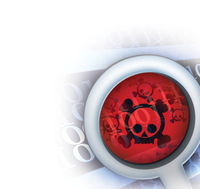
Lead Image © Tomasz Pacyna, 123RF.com
Into the Cloud for Security
Welcome
I still remember the day in the not too distant past when someone told me that Linux wasn't allowed on the network. I can remember the day when someone told me that he didn't want Windows 95 on his network because he thought it was "too chatty," and so he stuck with Windows 3.11 for probably two or three more years. In the very recent past, someone – actually multiple someones – told me that to put anything in the cloud was "just asking for trouble." My, oh my, how times have changed. It isn't that I love being right. OK, so maybe I do love being right – about technology. (Apologies to my wife for believing that I'm actually right about anything else.) I do, however, love being right about certain things: Linux, Windows operating systems that evolved beyond Windows 3.11, and the cloud.
You see, multiple years ago I embarked on a dangerous journey stating that someday all computing would be in the cloud. That's right. Our servers, or workloads as they would be called (right about that one), our workstations (Chromebooks come pretty close – I'm counting it), and yes, even the most ridiculous of all my prognostications, security would be in the freaking cloud! It doesn't sound radical now, but in 2012, it could get you physically abused to utter such a preposterous notion out loud. I dared to utter it, and now, it has come to pass.
Do you realize that it's actually better now to have your security in the cloud than on premises? It's true. If you don't believe me, google it. You know how to google, don't you? Just put your paws on the keyboard and type S-E-C-A-A-S. Security as a Service (SECaaS) is an actual thing. Companies are heading to the cloud for security in huge numbers. Whether you call it SECaaS or Software as a Service (SaaS) security, the result is the same: Real-time data analytics finding and blocking threats from your very vulnerable network has made traditional perimeter-based security and signature-based
...Buy this article as PDF
(incl. VAT)
Buy ADMIN Magazine
Subscribe to our ADMIN Newsletters
Subscribe to our Linux Newsletters
Find Linux and Open Source Jobs
Most Popular
Support Our Work
ADMIN content is made possible with support from readers like you. Please consider contributing when you've found an article to be beneficial.




